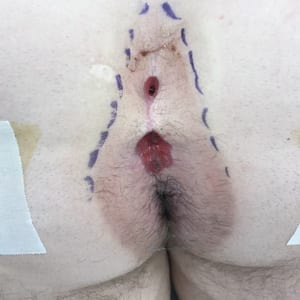- 719 West Hamilton Ave, Eau Claire, Wisconsin 54701
- (715) 832-1044
Pilonidal Terminology
- Home
- Pilonidal Terminology
There is quite a lot of confusion regarding the proper terminology for the different aspects of pilonidal disease. This page will attempt to clarify some of the words used to describe this process.
Gluteal crease, gluteal cleft, buttock cleft, natal cleft: this is the crease between the right and left buttocks. It can vary significantly from one person to another.
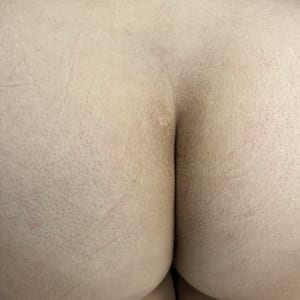
Midline pore or pit: in the center of the gluteal crease, normal skin pores can become enlarged. Pilonidal disease begins as loose body hairs get caught in these pores and find their way under the skin. These pores develop because of the deep cleft, and pressure in the cleft which enlarges the normal size skin pores.
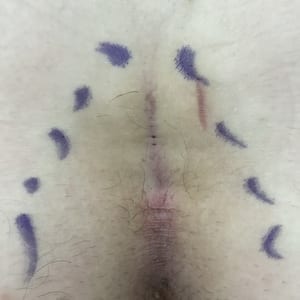
Markedly enlarged midline pores: if left untreated, these smaller pores can turn into pits large enough to be considered small, open wounds.
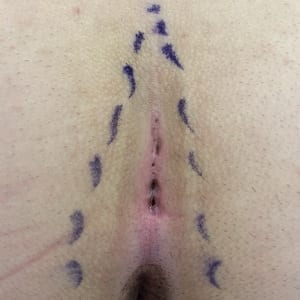
Pilonidal Cyst: as hairs burrow their way into the pits, pores, or openings, they accumulate under the skin in what is called a “pilonidal cyst”. The physical findings may be minimal, other than some slight discoloration, a small lump, and midline pores. Also, note the discoloration of the skin on both sides of the cleft from chronic irritation.
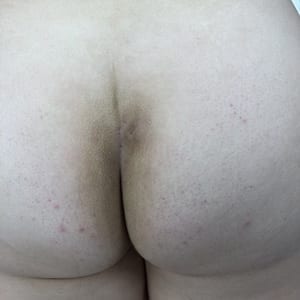
Pilonidal Abscess: if the cyst becomes acutely infected, it is called a pilonidal abscess. This is usually visible as a red, well defined, painful, lump. However, there are times when it is so deep that it doesn’t have the typical physical findings.
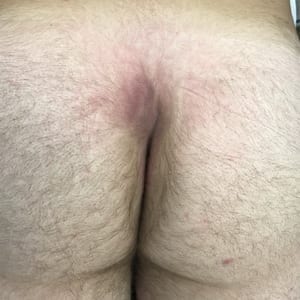
Pilonidal Sinus: there are times that the pilonidal cyst burrows through the fat and creates a secondary opening somewhere outside the midline called a “sinus tract opening”.
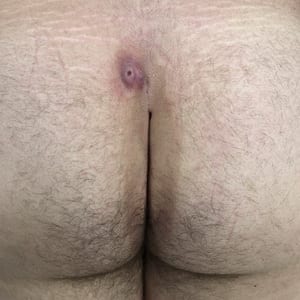
Open pilonidal wounds: large, open wounds in the gluteal crease can develop from failed operations, or just from the pilonidal disease itself. The skin is often very irritated around them from chronic drainage.
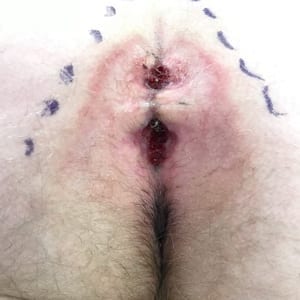
Perianal (caudal) Disease: this term is used when the openings or wounds are in close proximity to the anus. This is the hardest type of pilonidal disease to treat with surgery, and will almost never heal without surgery. In our clinic, we are very successful treating wounds in this location.
